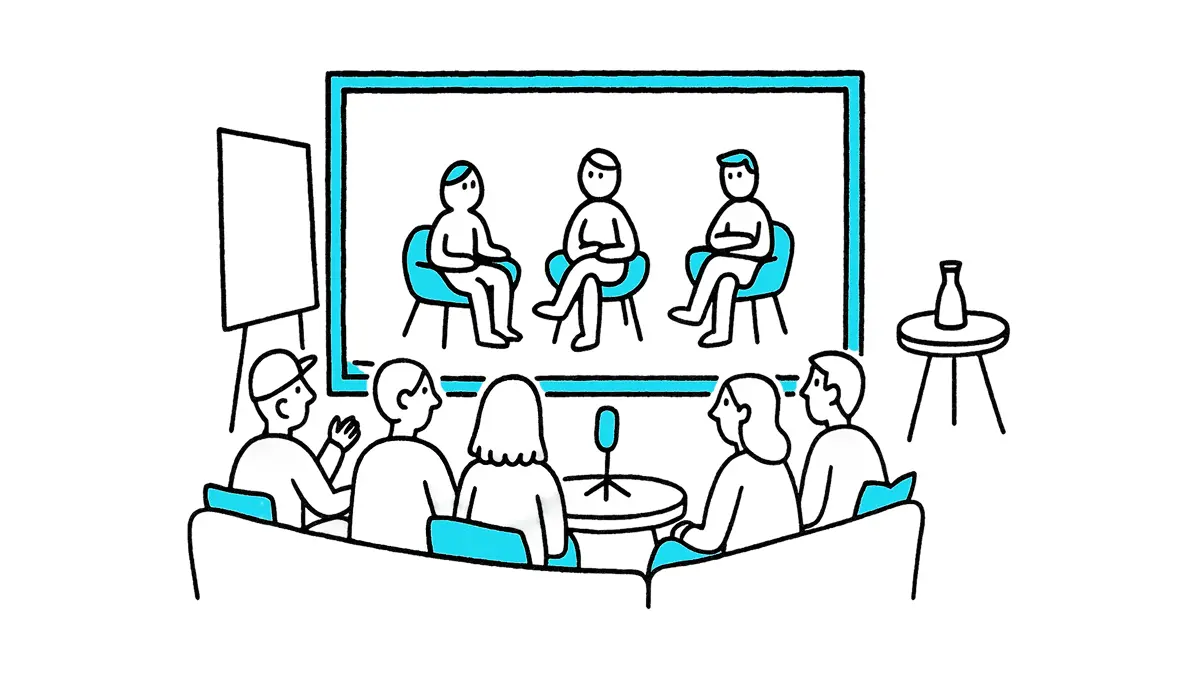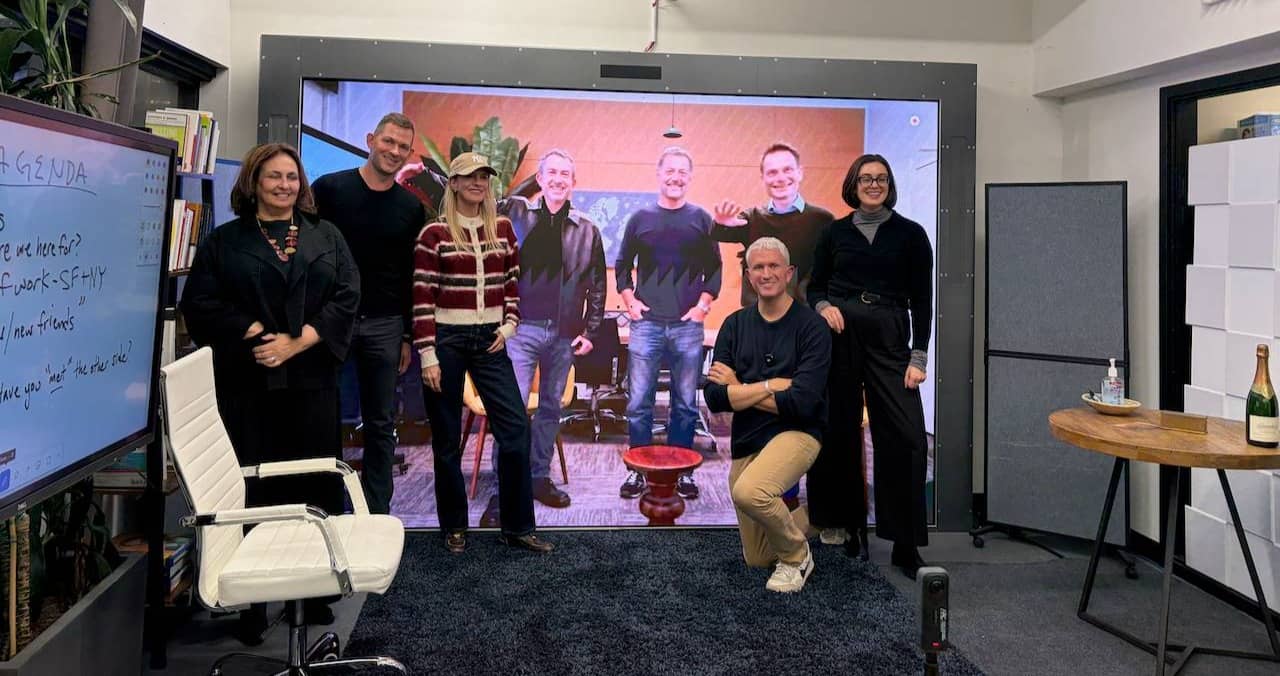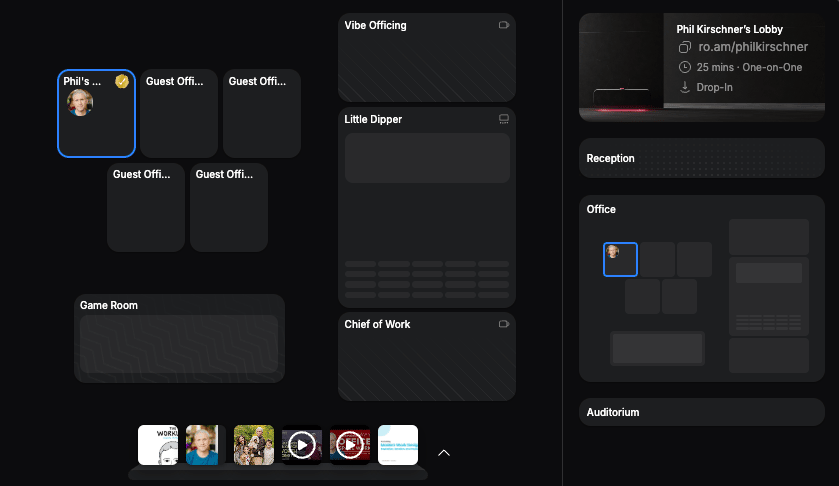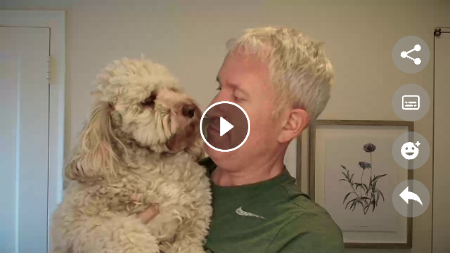5 Tools That Bring Us Closer

I recently co-hosted a meeting of minds where half the group was in New York and the other half in San Francisco… but it felt like we were in the same room. There were even comments about sock choices.
That paradox captures something important: the media often says AI and remote work erode human connection. My experience says otherwise.
Connection isn’t dying; it’s evolving.
And when we choose the right tools for the right moments—rather than picking sides between in-person and remote—technology can expand our capacity to relate across distance, modality, and time.
Today I’m sharing five tools I’m grateful for—noro, Roam, emovid, Kit, and Clay—and how they show that connection in modern work relies on both infrastructure and culture.
Noro: Feel Like You’re There
That bi-coastal gathering I mentioned happened through noro, a life-size video “portal.” It replicates the feeling of physical presence in ways that traditional video calls simply can't. The word I used the first time I saw it was “disarming.”
That bi-coastal gathering I mentioned happened through noro, a life-size video “portal.” It replicates the feeling of physical presence in ways that traditional video calls simply can't. The word I used the first time I saw it was “disarming.”

It’s much more than Zoom or Teams on a big screen. With the ability to see someone’s entire body, the conversation flows differently. When something got knocked over on the SF side, people with me in NY flinched as if they could catch it.
Distributed teams don’t struggle because people don’t want to connect—they struggle because the organization hasn’t built the infrastructure for connection. HR, IT, and CRE each own a piece of that system, and tools like noro only work when those foundations are in place.
If you have the luxury of traveling to see far-flung clients and colleagues regularly, that’s great and you should do that. Nothing beats an actual dinner or happy hour. Imagine enabling globally-distributed teams to “hang out” without travel budgets or visa complications.
How amazing would it be let them “hang out” with global colleagues?
Lead Across the Lines of Modern Work with Phil Kirschner
Over 22,000 professionals follow my insights on LinkedIn.
Join them and get my best advice straight to your inbox.
Roam: Visit My Office from Anywhere
Nearly every 1:1 and small-group call I host happens in Roam. It's my virtual office, and it does in one place what Zoom, Loom, Fathom, and Calendly used to do separately. My AI assistant Lola (named after my dog) wrangles meeting transcripts, and I plan to host more Workline community sessions next year.
Despite being alone most of the time, I love “leaving” my office to join visitors in a conference room, and seeing my next meeting waiting. As I wrote in my ‘where work happens’ article, “Roam acknowledges our human desire for spatial context…while embracing the reality of distributed work.”


To experience Roam for yourself, visit my lobby and book a time to chat or “drop in” live if you see I’m available. If you prefer a scheduled hang, I am holding time on Monday, December 1st at 11am ET, and you’re welcome to drop by (click below to add to your calendar.)
If your digital workplace doesn’t feel like a physical office people inhabit, it may be time to move.
Walk the Workline in Your Organization
I facilitate workshops for teams that want to align, prioritize, and move faster together. Common themes are below; click the links to get in touch.
🔮 Three Horizons to Model the Future [👉 Map your future]
🗺️ North Star Vision for Change [👉 Plot your course]
🏃♂️ Four Forces of Resistance [👉 Accelerate adoption]
Emovid: Walk-and-Talks With Lola
If you send me an email, and I read it while walking Lola, there is a good chance you will get a video message back from me using emovid.
In fact, you can meet Lola by watching the video, and even respond by video. As you will hear me say (or see in the transcript):
It's unusual for people to reply by video, but some braver friends and clients have done it, and I love that they do. It's a good way to get to know someone for real instead of just trading emails back and forth.

These micro-touchpoints maintain connection (and reduce meetings!) on days packed with calls or travel—no calendar coordination required. Just a genuine moment shared asynchronously.
And the best part about video messaging is the authenticity; in a world of deepfakes and auto-generated emails, you’re getting 100% Phil (and Lola) when I send a video message. Emovid even has a patent to prove it.
Kit: My Weekly Key to Your Inbox
Moving beyond real-time and real-feel we come to Kit, which powers The Workline and maintains an ongoing written conversation with thousands of modern work leaders.
Having a newsletter complements the video-based tools and allows me to share ideas across time zones and schedules. Readers engage when it’s convenient and relevant, and share articles with colleagues who weren't part of the original conversation.
Don’t get me wrong, I love LinkedIn and my 23k followers, but I know many thought leaders like me have felt the experience and algorithmic-predictability eroding. Having my own subscriber list and web-accessible articles feels more durable and credible.
And I feel much less weird saying “I wrote an article about XYZ” than “did you see my post on LinkedIn about XYZ.”
Clay: An Elephant Never Forgets
“Oh, Phil knows everybody,” is something I hear a lot in a work context. I’m far more introverted than I may seem online, but I do have a large network and I try to be as open and generous with it as I can.
Still, I may seemingly know everybody but can't remember everybody on-demand, and this is where Clay comes in. (Not this Clay.)

Want to be more intentional about building social capital next year? I highly suggest creating a personal CRM.
Clay manages 13k of my contacts and the full history of our conversations, meetings, and interactions from multiple sources. It proactively reminds me when I haven’t been in touch, surfaces context before calls, and connects dots I wouldn’t have seen.
Clay is the connective memory that underpins other tools for me, because human memory doesn’t scale to hundreds of relationships.
AI as the Hidden Glue
OK, I know I started by saying that AI can dilute human connection, but it does show up in my workflow as a connective tissue across platforms.
For example, I can ask my AI assistant if someone is a Workline subscriber. It queries Clay for their email addresses, then Kit to confirm subscription status. AI enriches the interaction, offering real-time relational context that makes conversations more personal, not less.

One day, AI will nudge me based on a combination of contact-sensitive knowledge and physical resource availability. Maybe I'll hear:
Instead of having a video call, should I book you and your client noro portals in your respective cities? They’re available!
For now, I'm grateful that (when implemented thoughtfully) AI can strengthen rather than diminish connection in distributed work.
What can you do on Monday?
Pilot one small behavioral change, e.g.:
- Send someone a video message (or reply to mine)
- Visibly surface content from a CRM before a team call
- Identify a workflow where AI creates context you’re not using
I'll see you down the line.

Lead Across the Lines of Modern Work with Phil Kirschner
Over 22,000 professionals follow my insights on LinkedIn.
Join them and get my best advice straight to your inbox.


